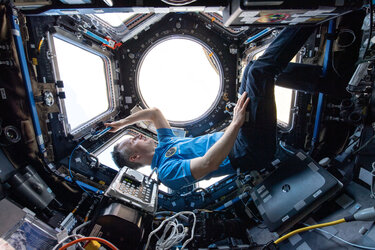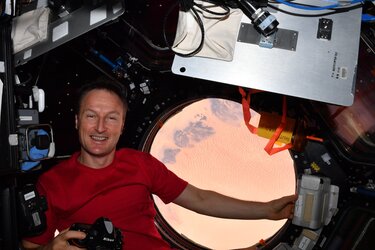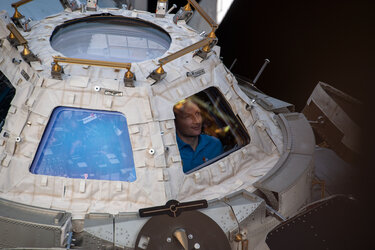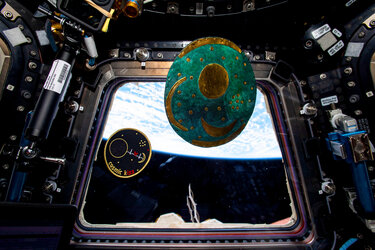Accept all cookies Accept only essential cookies See our Cookie Notice

About ESA
The European Space Agency (ESA) is Europe’s gateway to space. Its mission is to shape the development of Europe’s space capability and ensure that investment in space continues to deliver benefits to the citizens of Europe and the world.
Highlights
ESA - United space in Europe
This is ESA ESA facts Member States & Cooperating States Funding Director General Top management For Member State Delegations European vision European Space Policy ESA & EU Space Councils Responsibility & Sustainability Annual Report Calendar of meetings Corporate newsEstablishments & sites
ESA Headquarters ESA ESTEC ESA ESOC ESA ESRIN ESA EAC ESA ESAC Europe's Spaceport ESA ESEC ESA ECSAT Brussels Office Washington OfficeWorking with ESA
Business with ESA ESA Commercialisation Gateway Law at ESA Careers Cyber resilience at ESA IT at ESA Newsroom Partnerships Merchandising Licence Education Open Space Innovation Platform Integrity and Reporting Administrative Tribunal Health and SafetyMore about ESA
History ESA Historical Archives Exhibitions Publications Art & Culture ESA Merchandise Kids Diversity ESA Brand Centre ESA ChampionsLatest
Space in Member States
Find out more about space activities in our 23 Member States, and understand how ESA works together with their national agencies, institutions and organisations.
Science & Exploration
Exploring our Solar System and unlocking the secrets of the Universe
Go to topicAstronauts
Missions
Juice Euclid Webb Solar Orbiter BepiColombo Gaia ExoMars Cheops Exoplanet missions More missionsActivities
International Space Station Orion service module Gateway Concordia Caves & Pangaea BenefitsLatest
Space Safety
Protecting life and infrastructure on Earth and in orbit
Go to topicAsteroids
Asteroids and Planetary Defence Asteroid danger explained Flyeye telescope: asteroid detection Hera mission: asteroid deflection Near-Earth Object Coordination CentreSpace junk
About space debris Space debris by the numbers Space Environment Report In space refuelling, refurbishing and removingSafety from space
Clean Space ecodesign Zero Debris Technologies Space for Earth Supporting Sustainable DevelopmentLatest
Applications
Using space to benefit citizens and meet future challenges on Earth
Go to topicObserving the Earth
Observing the Earth Future EO Copernicus Meteorology Space for our climate Satellite missionsCommercialisation
ESA Commercialisation Gateway Open Space Innovation Platform Business Incubation ESA Space SolutionsLatest
Enabling & Support
Making space accessible and developing the technologies for the future
Go to topicBuilding missions
Space Engineering and Technology Test centre Laboratories Concurrent Design Facility Preparing for the future Shaping the Future Discovery and Preparation Advanced Concepts TeamSpace transportation
Space Transportation Ariane Vega Space Rider Future space transportation Boost! Europe's Spaceport Launches from Europe's Spaceport from 2012Latest

Cupola Moon
Thank you for liking
You have already liked this page, you can only like it once!
New picture, but a familiar face.
ESA astronaut Matthias Maurer took this image of Earth’s natural satellite, the subject of exciting news this week, from the seven-windowed cupola of the International Space Station.
Down on Earth, the rocket that will launch NASA’s Orion spacecraft with the European Service Module to the Moon has been moved to the launchpad in Florida, USA, for its first full test before the Artemis I launch later this year.
The Space Launch Systems rocket (SLS), aka the Moon rocket, left the Vehicle Assembly Building at NASA’s Kennedy Space Center at around 23:00 CET (22:00 GMT) on 17 March on a 6.5 km trip to Launchpad LC39B.
Traveling at a maximum speed of just 1.3 km/h, the 6.5-km voyage took 12 hours to complete on a specially designed crawler vehicle.
In the preceding months the Orion spacecraft with European Service Module had been placed on top of the rocket.
The first Artemis mission will send Orion to the Moon and back, farther than any human-rated spacecraft has travelled before. ESA’s European Service Module is the powerhouse that fuels and propels Orion and provides everything needed to keep astronauts alive with water, oxygen, power and temperature control.
Matthias posted this image to social media, saying “The Moon. So close, yet so far – but not for much longer!” With the rocket out on the launch pad, NASA and ESA are a step closer to our destination.
Matthias added, “As I took these Moon shots from Cupola, I couldn't help but imagine what it would feel like to fly in Orion to the Gateway, propelled by the European Service Module.”
It’ll be a while before that happens. In the meantime, Matthias has a lot to keep him busy during his Cosmic Kiss mission, including his first spacewalk next Wednesday 23 March. Alongside NASA’s Raja Chari, he will have a variety of tasks, including installing a power & data cable for Europe's external science platform Bartolomeo.
Make sure to follow Cosmic Kiss on Twitter, Facebook, Instagram, YouTube the Cosmic Kiss mission page and in regular Space Station updates from ESA.
-
CREDIT
NASA/ESA-M.Maurer -
LICENCE
ESA Standard Licence

Matthias in the Cupola

Matthias Maurer in the Cupola

Moonset

Cupola portraits of Matthias Maurer















 Germany
Germany
 Austria
Austria
 Belgium
Belgium
 Denmark
Denmark
 Spain
Spain
 Estonia
Estonia
 Finland
Finland
 France
France
 Greece
Greece
 Hungary
Hungary
 Ireland
Ireland
 Italy
Italy
 Luxembourg
Luxembourg
 Norway
Norway
 The Netherlands
The Netherlands
 Poland
Poland
 Portugal
Portugal
 Czechia
Czechia
 Romania
Romania
 United Kingdom
United Kingdom
 Slovenia
Slovenia
 Sweden
Sweden
 Switzerland
Switzerland
























